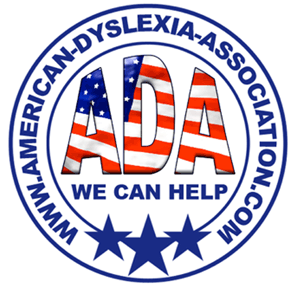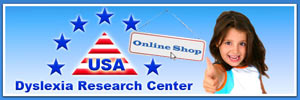9 Surprising Clues Of Dyslexia in Children
Will Your Child Grow Out of His Reading Difficulty or Is It Dyslexia?
Are you worried your child’s slow start to reading might indicate dyslexia?
Is your older child struggling with reading, but you are not sure how serious it is?
Should you act now or will your child’s reading difficulties most likely resolve naturally?
We all know the key to helping dyslexia in children is early and intensive intervention. If you can treat it early — in elementary school — you may short circuit a lot of frustration before bad habits are formed and while there is time to catch up. Even in later grades, the sooner you know what you are dealing with, the better.
About 40% of children struggle with reading at some point in their lives. It’s a complex skill that we are not born with.
According to Yale, about a quarter of children who experience a slow start to reading will go on to be proficient readers as language processing skills mature naturally (boosting phonemic awareness) and vocabulary expands. And so, yes, there is a risk of over-reacting to early reading problems.
You don’t want to burden your child with programs or therapies he doesn’t need, possibly creating stress and anxieties in him by pursuing extra treatments that turn out to be unnecessary.
However, Yale will also tell you that 15-20% of children do not grow out of their reading difficulties — they have a reading disability, loosely described as dyslexia, that will likely not resolve itself without outside help.
If this is your child, you don’t want to sit idly if it turns out the reading problems are long-term in nature.
The sooner you recognize the undeniable signs of dyslexia, the sooner you can take action. This may include pressing the school to at least recognize the issue and pursuing your own after-school remedies.
If there is dyslexia in your family, you likely know there is a strong hereditary component to dyslexia and that you should act at the first sign of difficulty. Similarly, if your child has other diagnosed learning difficulties, you most likely have your answer. Reading is an amazing skill that is not easy to master, even for the most healthy of learners.
But what if it seems just to be a reading problem? How can parents distinguish a minor reading difficulty from dyslexia?
Dyslexia: A Deep-Seated Reading Difficulty (That Probably Won’t Resolve Naturally)
As an aside, dyslexia is not a condition or a disease. There is no dyslexia gene or medical diagnosis. Dyslexia in children is an educational evaluation arrived at through the collection of evidence, symptoms.
The most important aspects of the dyslexia diagnosis are that the reading difficulty:
- is not explained by other learning disabilities, and
- will not likely resolve itself.
Children with temporary reading difficulties need instruction, guidance and practice. Children with dyslexia need more intensive treatment.
Cognitive Delays Associated With Dyslexia
Many children struggle with reading, so current reading ability is not always a reliable indicator. Your interest is what happens next — will your child go on to be a proficient and enthusiastic reader or will the reading troubles persist?
Differentiating between a garden-variety reading difficulty and dyslexia comes down to what else is going on with your child. If there are no other apparent difficulties, and no hereditary issues, read on. There very well could be cognitive difficulties under the surface that are impeding reading progress now and will continue to do so in the future.
There are three types of cognitive difficulties that impede reading. These are deep-seated difficulties that will not necessarily fade with maturity and need to be addressed if your child is to become a proficient reader. They fall into three main categories:
- Language processing
- Working memory
- Attention issues
Note, this list specifically excludes visual processing and other vision-related issues, which are no longer thought to be significant risk factors in dyslexia. The predominant causes of dyslexia relate to language, cognitive delays in processing, working memory and/or focus that impede the ability to automatically connect text symbols on a page to language memory.
Using This List Of Clues of Dyslexia in Children
This list can help parents identify early signs of dyslexia (away from actual reading ability) by identifying markers or clues of the cognitive delays that are known to impede reading development and are most often associated with dyslexia in children.
If your child is a struggling reader and one or more of the clues or symptoms below are evident, your child’s reading difficulty may not resolve itself. The symptom suggests your child has a cognitive skill gap that is already impacting reading and is likely to continue impeding reading progress until it is treated.
Alternatively, if your child has a reading difficulty and none of the symptoms listed below, there is a good chance he is one of the 25% who starts slowly but eventually masters reading.
Clue #1. Difficulty Rhyming at 3-4 Years of Age
This is a well-known dyslexia risk factor. If you have done any research on dyslexia, this will likely not be surprising as you will be aware of it. We feel it is important to include, however, given its reliability in predicting dyslexia in children. Rhyming is a good indicator of trouble ahead because it requires the same language processing skills needed in reading.
Rhyming is the ability to process and manipulate language, language dexterity, which eventually leads to phonemic awareness and fluent decoding. If your child struggles to match sounds in the middle or at the end of words, i.e. rhyming, it indicates a difficulty with processing and manipulating language. If left unresolved, it is a difficulty that will continue to impede reading progress through life.
Clue #2. Balance or Coordination Issues
- Late in learning to ride a bike
- Struggles to catch a ball
- Lacks spatial awareness on a sports field
These are three different symptoms of the same underlying issue — sensory integration disorder that often manifests itself in learning as ADHD-PH (Predominantly Hyperactive).
Learning to ride a bike requires balance. If your child struggled to ride a bike “on time” (on average around 4-7 years of age), it may indicate a sensory integration issue. Balance is a response to sensory inputs. If those signals are out of sync, your child’s adjustments will be out of sync, making balance a challenge.
Catching a ball requires good hand-eye coordination which, of course, requires sensory integration. Similarly, spatial awareness — such as being able to manage your positioning on a sports field where people and the ball are constantly moving — also requires good sensory integration skills.
Neuroscientists tell us “neurons that fire together wire together.” If sensory inputs are out of sync, even the tiniest little bit, there is noise in the brain that is disorienting, distracting, exhausting and an impediment to learning, which includes learning to read.
Reading is a difficult skill to learn even with perfect attention skills.
The lack of synchronicity of auditory and visual inputs creates timing issues that impede focus and make it difficult to engage. Not only can this slow down the learning to read process, the extra effort required to read can make reading hard to do for any length of time, depriving your child of much needed reading practice.
Therefore, if your child is a struggling reader and exhibits signs of sensory integration issues, reading could be a long term challenge. In this case, an intervention that works on sensory integration, such as Interactive Metronome, might be appropriate. In any case, it’s a clue that your child’s current reading challenges may not resolve naturally.
Continue reading:
https://www.gemmlearning.com/blog/dyslexia/9-surprising-clues-of-dyslexia-in-children/
Category: Dyslexia







